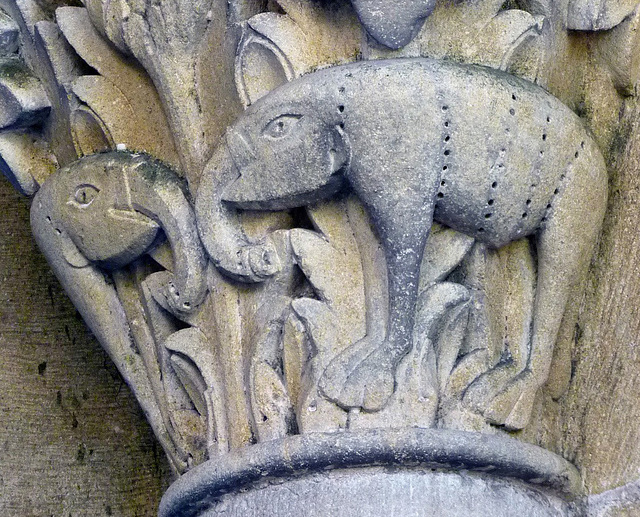Perrecy-les-Forges - Saint-Pierre-et-Saint-Benoît
Perrecy-les-Forges - Saint-Pierre-et-Saint-Benoît
Andlau - Saints-Pierre-et-Paul
Andlau - Saints-Pierre-et-Paul
Châtel-Montagne - Notre-Dame
Sant Joan de les Abadesses - Monastery
Sant Joan de les Abadesses - Monastery
Basel - Muenster
Basel - Muenster
Basel - Muenster
Boí - Sant Joan de Boí
Aulnay - Saint-Pierre
Surgères - Notre-Dame
Surgères - Notre-Dame
Surgères - Notre-Dame
Vouvant - Notre-Dame
Vouvant - Notre-Dame
Lusignan - Notre-Dame et Saint-Junien
Lusignan - Notre-Dame et Saint-Junien
Vezelay - Basilique Sainte-Marie-Madeleine
Vezelay - Basilique Sainte-Marie-Madeleine
Sens - Cathedral
Doussay - Saint-Martin
Location
Lat, Lng:
You can copy the above to your favourite mapping app.
Address: unknown
You can copy the above to your favourite mapping app.
Address: unknown
See also...
Keywords
Authorizations, license
-
Visible by: Everyone -
All rights reserved
-
243 visits
Perrecy-les-Forges - Saint-Pierre-et-Saint-Benoît


The church of the former Priory Saint-Pierre-et-Saint-Benoît is now the parish church of the village. When I visited Perrecy-les-Forges in April 2011 I had the impression, that the church and the museum were locked since years.
Charles Martel, grandfather of Charlemagne and leader of the frankish armee in the Battle of Tours (732), gave the Perrecey estate to his brother Childebrand as a gift to thank him for defeating the Sarascens in the valleys of the Rhone and the Saône in 732. Childebrands heirs bequeated it to the abbey of Saint-Benoît-sur-Loire.
First monks settled here 880/885. Some parts of the westwork may date back to the 9th century. 1020/1030 a romanesque basilica was constructed here. 1120/1130 the large narthex was added, which is - a unique masterpiece.
This capital - for me - is the most interesting in Perrecy-les-Forges. Decades ago during my first year at university I wrote an essay, dealing with the subject "Medieval Elephants". There were only three elephants during medieval times:
Abul Abbas, a present from Harun al Raschid to Charlemagne. Abul Abbas reached Aix La Chapelle in 802 died 810 after swimming in the Rhine.
The Cremona-elephant was a present from Al Kamil to Frederik II in 1229.
The third elephant was brought to Europe by Louis IX (Saint Louis) in 1255. It was given to Henry III and died in London 1258.
There was not a single elephant in Europe between 810 and 1229, and this capital was carved 1120/1130. - It may be, that the carver of this "exotic" capital, was a well travelled person, but I doubt it.
It is a phantastic carving designed completely out of rumours about a giant animal living far behind the horiziont.
The animal would have a large nose or trunk, long teeth - and totally "uncommon" feet. Over the distances, the size of the ears got lost and the feet got fanshaped, but that is all details. Actually these elephants are pretty precise! I have built up a collection of medivale elephants, if you want to see more, just follow the link:
www.flickr.com/photos/martin-m-miles/galleries/7215762494...
Charles Martel, grandfather of Charlemagne and leader of the frankish armee in the Battle of Tours (732), gave the Perrecey estate to his brother Childebrand as a gift to thank him for defeating the Sarascens in the valleys of the Rhone and the Saône in 732. Childebrands heirs bequeated it to the abbey of Saint-Benoît-sur-Loire.
First monks settled here 880/885. Some parts of the westwork may date back to the 9th century. 1020/1030 a romanesque basilica was constructed here. 1120/1130 the large narthex was added, which is - a unique masterpiece.
This capital - for me - is the most interesting in Perrecy-les-Forges. Decades ago during my first year at university I wrote an essay, dealing with the subject "Medieval Elephants". There were only three elephants during medieval times:
Abul Abbas, a present from Harun al Raschid to Charlemagne. Abul Abbas reached Aix La Chapelle in 802 died 810 after swimming in the Rhine.
The Cremona-elephant was a present from Al Kamil to Frederik II in 1229.
The third elephant was brought to Europe by Louis IX (Saint Louis) in 1255. It was given to Henry III and died in London 1258.
There was not a single elephant in Europe between 810 and 1229, and this capital was carved 1120/1130. - It may be, that the carver of this "exotic" capital, was a well travelled person, but I doubt it.
It is a phantastic carving designed completely out of rumours about a giant animal living far behind the horiziont.
The animal would have a large nose or trunk, long teeth - and totally "uncommon" feet. Over the distances, the size of the ears got lost and the feet got fanshaped, but that is all details. Actually these elephants are pretty precise! I have built up a collection of medivale elephants, if you want to see more, just follow the link:
www.flickr.com/photos/martin-m-miles/galleries/7215762494...
- Keyboard shortcuts:
Jump to top
RSS feed- Latest comments - Subscribe to the comment feeds of this photo
- ipernity © 2007-2025
- Help & Contact
|
Club news
|
About ipernity
|
History |
ipernity Club & Prices |
Guide of good conduct
Donate | Group guidelines | Privacy policy | Terms of use | Statutes | In memoria -
Facebook
Twitter

Sign-in to write a comment.